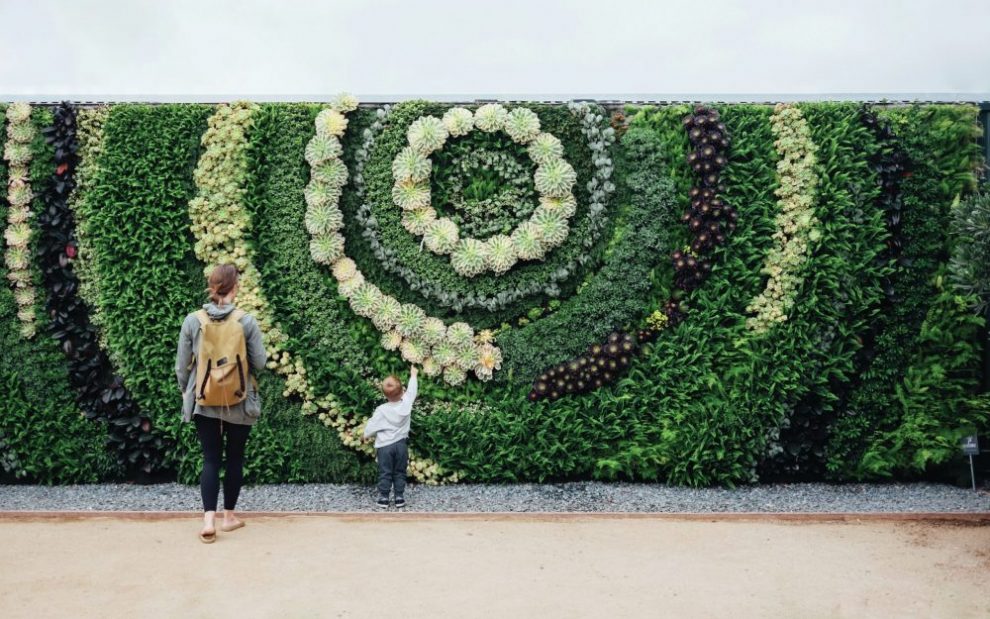Years ago, when I was in graduate school, I had a wonderful spiritual director who would often ask me this simple question when I was in the midst of discernment: “What is it the season for?”
It was a profoundly freeing question, because it honored that my life had varying seasons, times when certain things were called for and other things needed to be released. While I was finishing my Ph.D. studies, I often had to remind myself that I needed to direct the majority of my attention and time to them if I was ever going to finish despite the many other rich possibilities calling to me.
After my mother died, I entered into a deep period of grief. I found great comfort in a dear friend, a rabbi, who told me that in Jewish tradition nothing extra is expected of a person during the first year after a significant loss. What a beautiful gift she offered to me by reminding me that this was a season of grief. Taking on new projects would not be honoring where I was and the loss I had sustained. Similarly, in periods of my life when I have experienced a flare of my autoimmune illness, I have to ask this question to remind myself of a call to focus on healing.
As someone who often feels inspired by many possible projects, I return to this question again and again even in times of wellness and joy. Perhaps especially as I reach midlife and my awareness of the limitations of my time left starts to feel even more acute, this question invites me to remember what is most valuable in this moment right now.
Our lives move in seasons. In broad strokes there are the seasons of childhood, young adulthood, midlife, and elderhood. They correspond to the natural seasons of spring, summer, autumn, and winter. However, within each of these life phases or cycles, we may experience the rise and fall of any of the seasons depending on what is happening for us.
All of creation follows certain rhythmic patterns. Just as the ocean tides ebb and flow, so does life. As the sun rises and sets, as the moon waxes and wanes, as the flowers bloom and the leaves fall, life also comes and goes. The reality of life’s rhythms unfolds in the sacred process of our own journeys.
As we grow in our capacity to be present to the sacred in each moment, we discover that God’s deepest quality is mystery, and the very nature of mystery fosters an experience of tension. Our finite minds can only comprehend so much of spiritual reality, so as we mature spiritually we are called upon to learn to live with a certain measure of ambiguity and tension. Mystery is pregnant with hundreds of levels of unfolding, revealing, and concealing.
The reality of life’s rhythms unfolds in the sacred process of our own journeys.
Advertisement
God is portrayed in scripture as transcendent and immanent, hidden and revealed, unknowable and knowable, unreachable and in our very midst. Our experience is likely that sometimes God seems very intimate and near, while at other times we feel estranged from the holy presence and God feels very far away.
When we encounter these tensions in our lives—perhaps the presence of joy and grief together or the tension between different desires in our discernment—we long for a sense of inner resolution. Yet the reality of our lives is that we will always live with some kind of tension. Sometimes the outer world is in the full blossom of spring while our inner world is still in the deepest dark of winter. Sometimes we feel the joy of spring and grief of autumn at the same time, because life offers us both hope and loss, woven together.
Often, we feel impatient when we are in a period of not knowing what next steps to take. We want to rush to the answer, to have clarity and a sense of revelation. But much like the slow unfolding of Earth’s seasons, our life seasons take their own time as well. Trying to rush ourselves to some premature awareness or insight does not honor the needs of the soul for space and time to incubate.
In the last few years I have been invited to hold the paradox of life’s beginnings and endings together. As my father-in-law was dying, his first grandson was being born. The memorial and baptism were performed in the same service. It was a touching way to honor how life is always bringing us births and deaths at every moment. More recently I had two good friends, one who was journeying with her husband through the final stages of Parkinson’s disease and the other who was getting ready to give birth to her first child.
Much like the slow unfolding of Earth’s seasons, our life seasons take their own time as well.
If you are in the midst of a time of discernment, when you are wondering what is next in your life, see if you might begin with a letting go. Let go of your need to figure things out.
Let go of a particular timetable (even if there are external time pressures). Let go of your own need to keep busy to move things along.
Practice: Reflect on the seasons of your lifetime
Our souls have their own rhythm and pattern. Tending to the cycles of creation can offer us tremendous wisdom, but examining the seasons of our own souls can be equally fruitful.
Take some time with your journal and draw a timeline of your life. This could be in a literal line or perhaps in a spiral or another shape that resonates with you. Move into a contemplative and reflective space, beginning with your earliest memories until the present day. Move through your life experience in your imagination.
As your life unfolds before you, note which season you were in during a given period of your life and when the transition came that thrust you into a new season. This is a way of honoring the seasons as they have actually unfolded in your life and the transitions that have ushered in a new experience or awareness. Notice if there are any patterns to the way the seasons have unfolded for you or any new awareness that comes from looking at your life in this way.
What were the moments of transition and letting go? When were the great celebrations? When did you hold vigil? When did you touch eternity? When did you say yes to life’s call to risk and adventure? When did you hold back? When have been the seasons of activity and achievement? When have been the seasons of letting go and releasing? See what you notice and discover about the patterns of what brings you joy and life.
Pray with each of these moments. Ask God to reveal to you the seeds that were planted long before they bloomed. When was birth and death happening at the same time? Ask for the grace to surrender your own agenda and be held in the journey of ripening into fullness. What is it the season for, right here and now, given the circumstances of your life?
Ask God to reveal to you the seeds that were planted long before they bloomed.
For additional support, pray with these moments in Jesus’ life and ask similar questions. What were the seeds and fruit of each of these experiences? How does Jesus model surrendering to the divine desire for his life?
- The birth of Jesus (Luke 2:1–7)
- The boy Jesus in the Temple (Luke 2:41–52)
- The baptism of Jesus (Matt. 3:13–17)
- The temptation of Jesus (Matt. 4:1–11)
- The wedding at Cana (John 2:1–12)
- Jesus washes the disciples’ feet (John 13:1–20)
- The new commandment (John 13:31–35)
- The death of Jesus (Mark 15:33–41)
Adapted from Sacred Time: Embracing an Intentional Way of Life (Sorin Books) by Christine Valters Paintner.
This article also appears in the June 2021 issue of U.S. Catholic (Vol. 86, No. 6, pages 24-25). Click here to subscribe to the magazine.
Image: Unsplash/Paul Hanaoka














Add comment